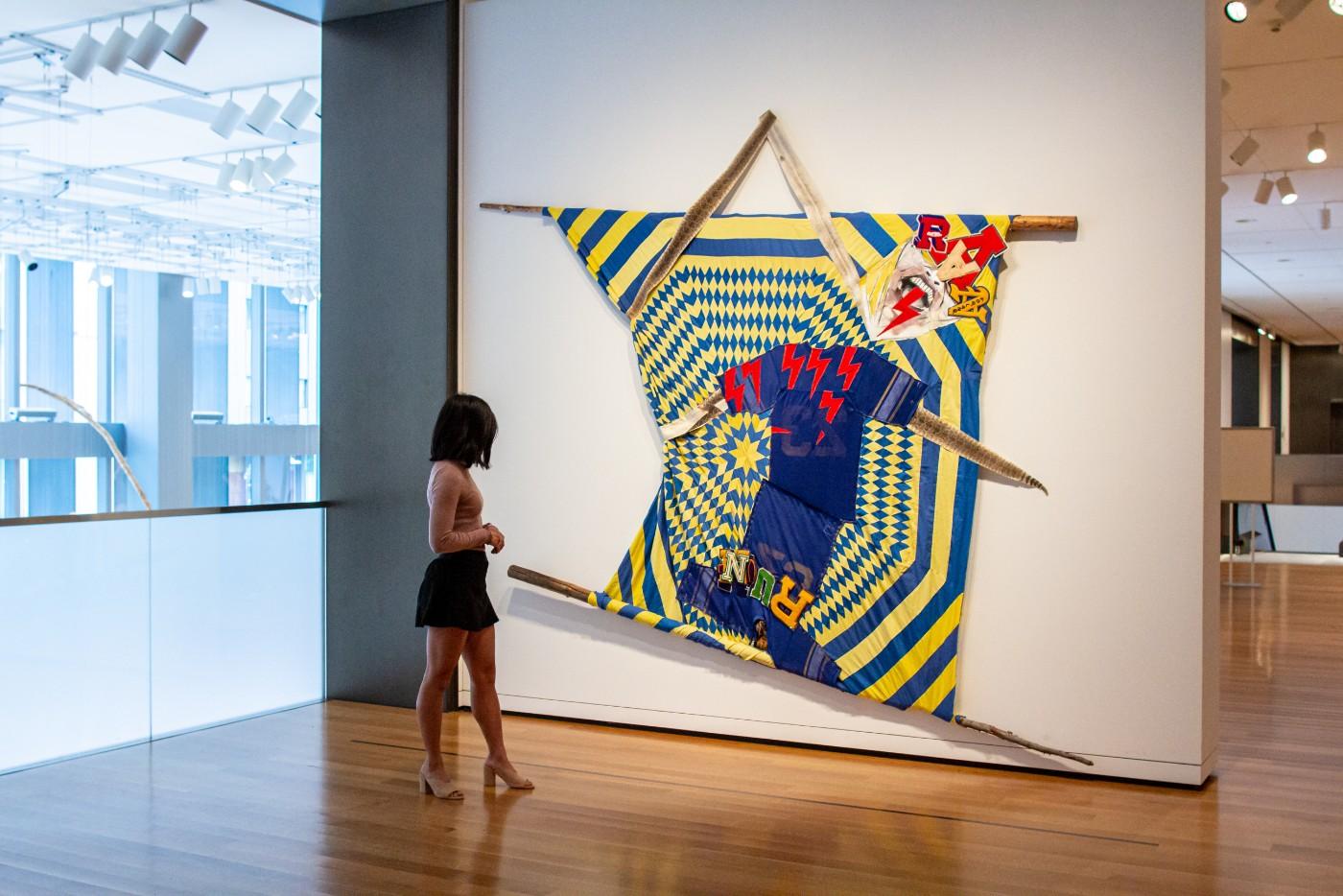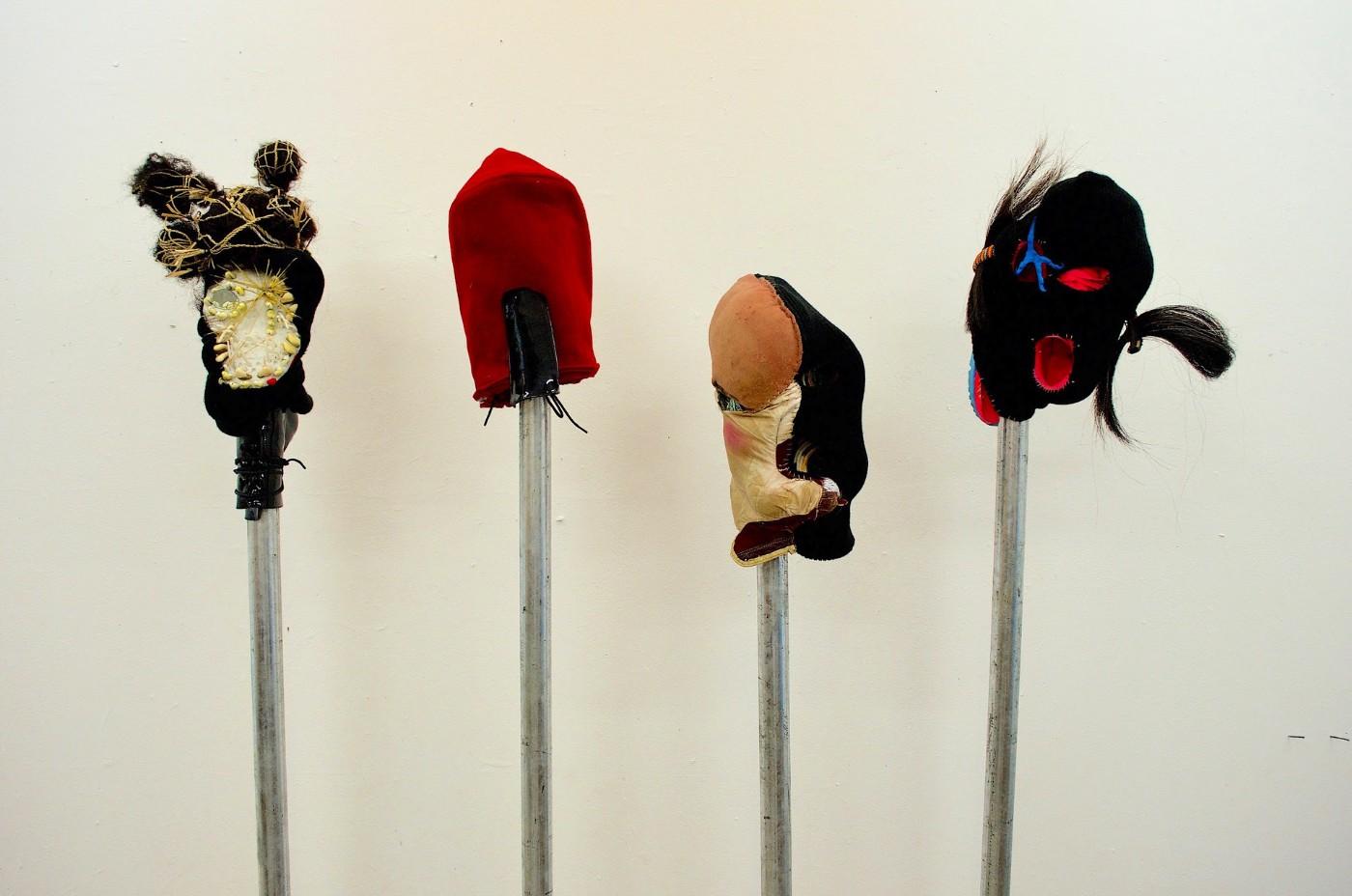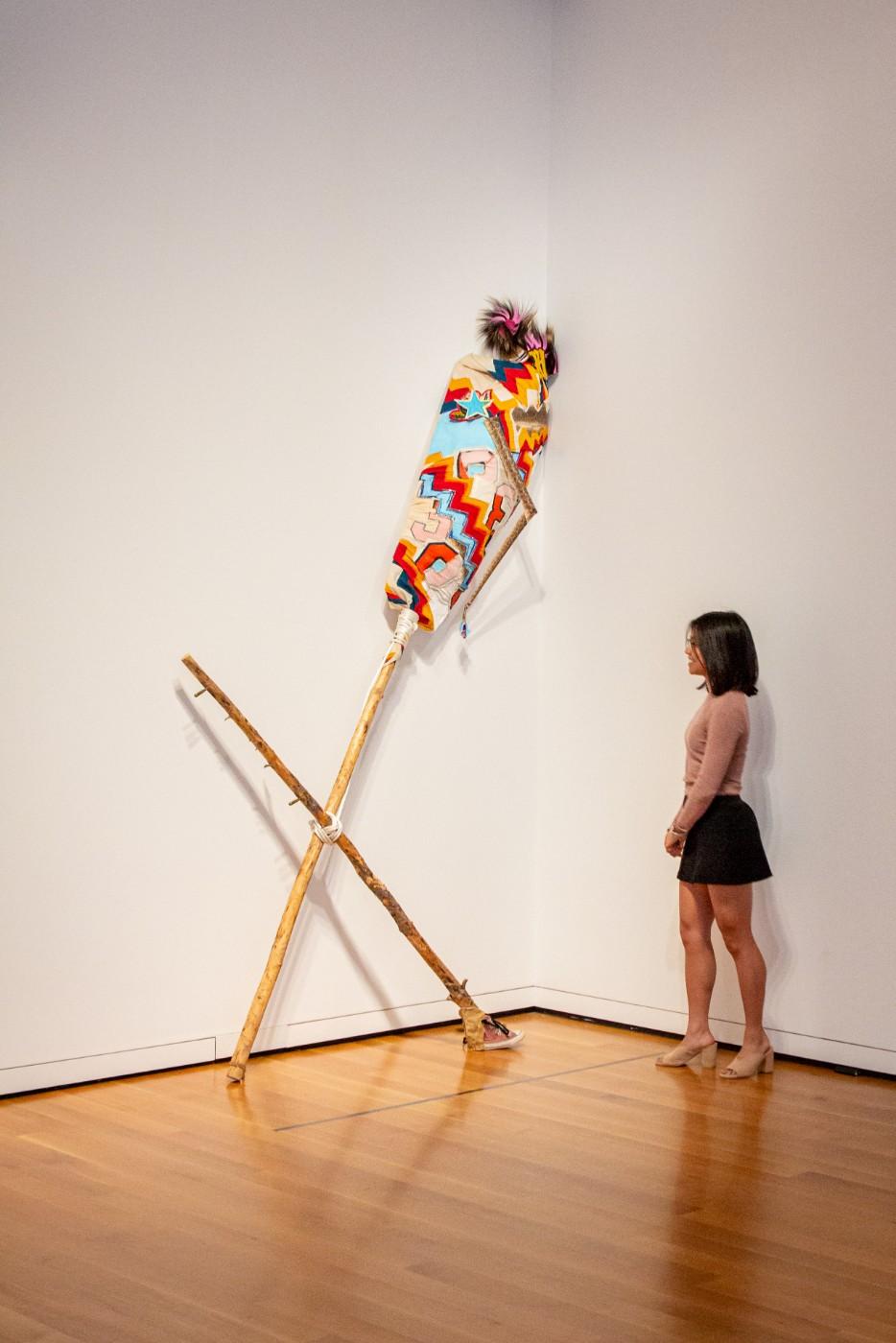In her 2018 Pussy Hats series, instead of the bright pink knit beanies we might expect, we find ominous sculptures that more viscerally conjure the female body, experience, and political rage. Comprised of boxing gloves, hair, shells, and textiles, Ball's Hats are reminiscent of heads on a spike, and bring to mind soldiers and the casualties of war.

Re-Run, 2019, installed in Natalie Ball: Twinkle, Twinkle, Little Snake, 2019, at Seattle Art Museum
In her genre-bending sculptures, Natalie Ball is playing with what we think we know. Subverting tropes about Native American identity and art by repurposing familiar materials, Ball points out the absurdity of our assumptions.
The winner of the Seattle Art Museum’s 2018 Betty Bowen award, her current exhibition, Natalie Ball: Twinkle, Twinkle, Little Snake, consists of two new large-scale works, and brings a humorous tone to a serious subject. Throughout her body of work, Ball uses repurposed found objects mixed with materials traditionally associated with Native arts to bring new, more nuanced meanings to both.

Natalie Ball

Pussy Hat series, Natalie Ball, 2018, mixed media
For Twinkle, Twinkle, Little Snake, Ball similarly uses forms and materials that we associate with comfort, disabusing them of this association. Animal hides, clothing, and quilts or tapestries become figurative, like creatures driven to action rather than content with the domesticity we associate with these materials. Re-Run (2019) issues the imperative to “RUN” in repurposed jersey letters. Rising from a single pink Converse, You Mist, Again (Rattle) (2019) is a super-sized rattle, anthropomorphizing before our eyes. Ball’s use of rattlesnake skins in both works alludes to the ever-changing nature of human flesh, the danger we associate with snakes, and our own mortality.

You Mist, Again (Rattle), 2019, installed in Natalie Ball: Twinkle, Twinkle, Little Snake, 2019, at Seattle Art Museum
While Ball’s sculptures are wholly new objects, their materials have a familiarity that draws us in. By recontextualizing recognizable objects and media, she gives them new meanings, part of her stated goals as an artist. Through her works, Ball seeks to substitute her real, lived experience for the reductive narratives we find about Native identity, stating, “I make art as proposals of refusal to complicate an easily affirmed and consumed narrative and identity without absolutes.”

Re-Run, 2019, installed in Natalie Ball: Twinkle, Twinkle, Little Snake, 2019, at Seattle Art Museum
Originally from Portland, Oregon, Ball holds degrees from the University of Oregon, Massey University in New Zealand, and an MFA from the Yale School of Art. Ball now lives on her Klamath ancestral homelands in Chiloquin, Oregon. The museum's annual Betty Bowen award honors a Northwest artist for their “original, exceptional, and compelling work,” and comes with a $15,000 prize, in addition to an exhibition.
Natalie Ball: Twinkle, Twinkle, Little Snake is on view at Seattle Art Museum through November 17, 2019.



























